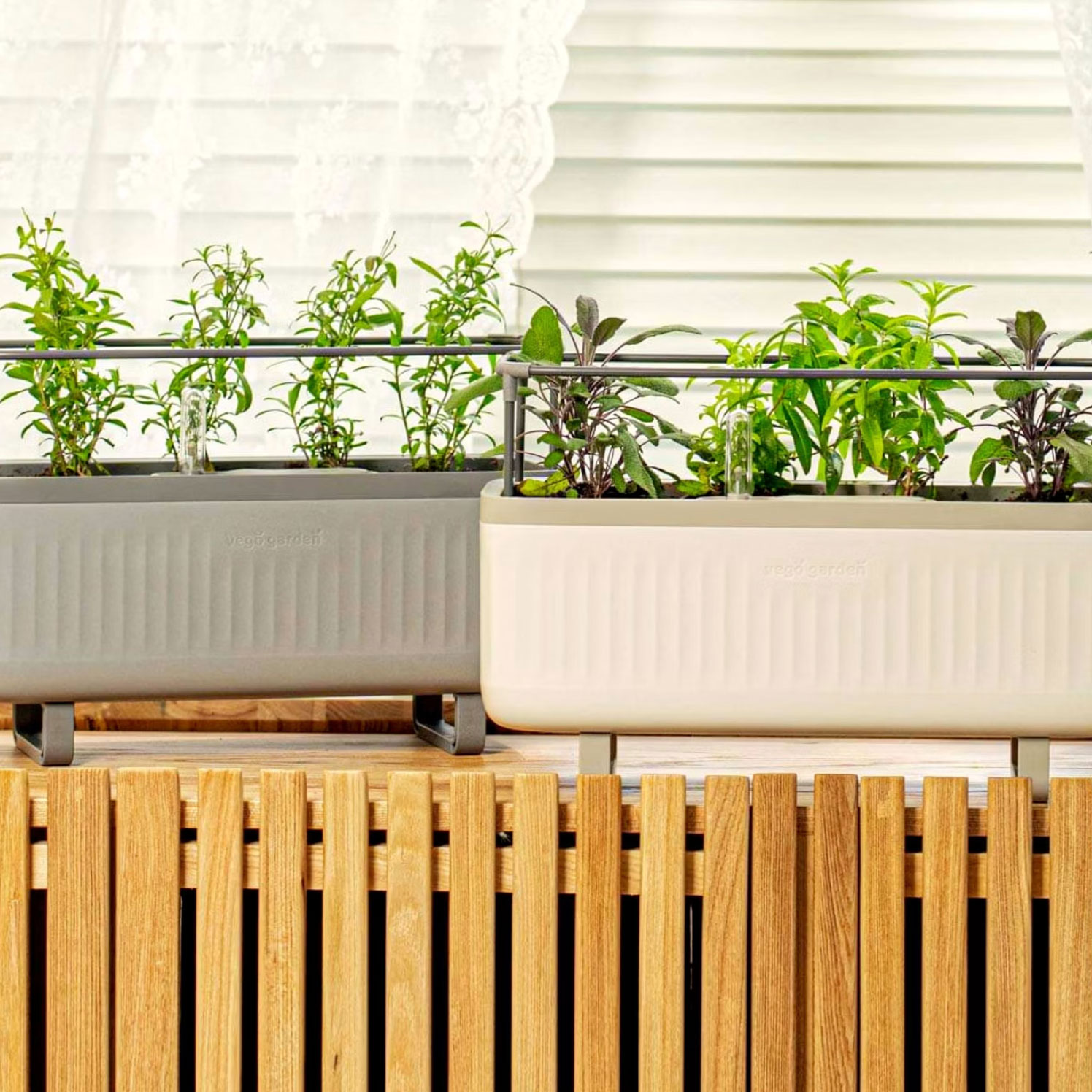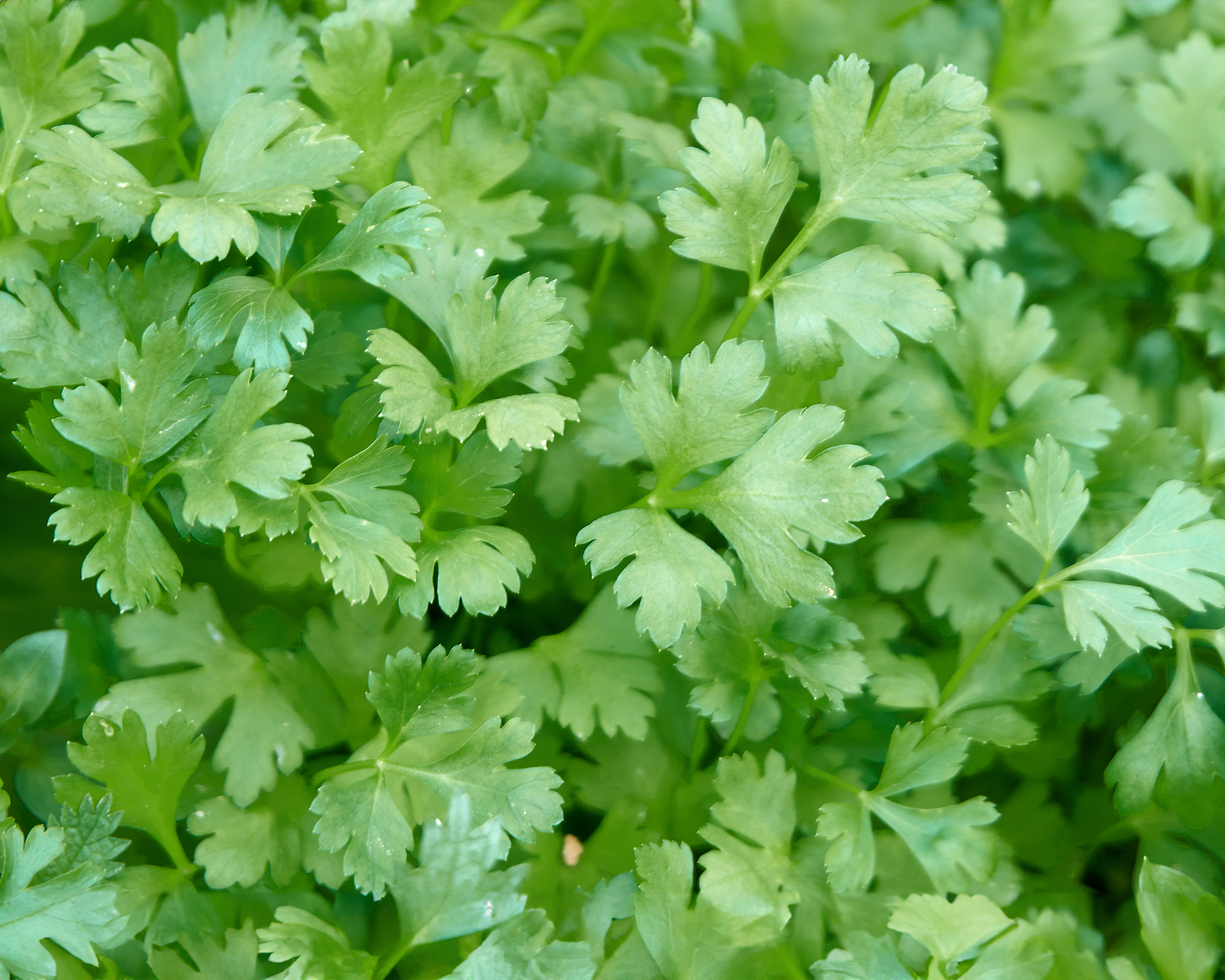Give Your Herbs A Haircut! 6 Aromatic Edibles That Benefit From Snipping In Summer & Why Trimming The Herbs Matters
Some edible plants are happy tumbling over pots and planters – but for others, trimming the herbs can help. Here are 6 aromatic edibles to snip into shape this summer
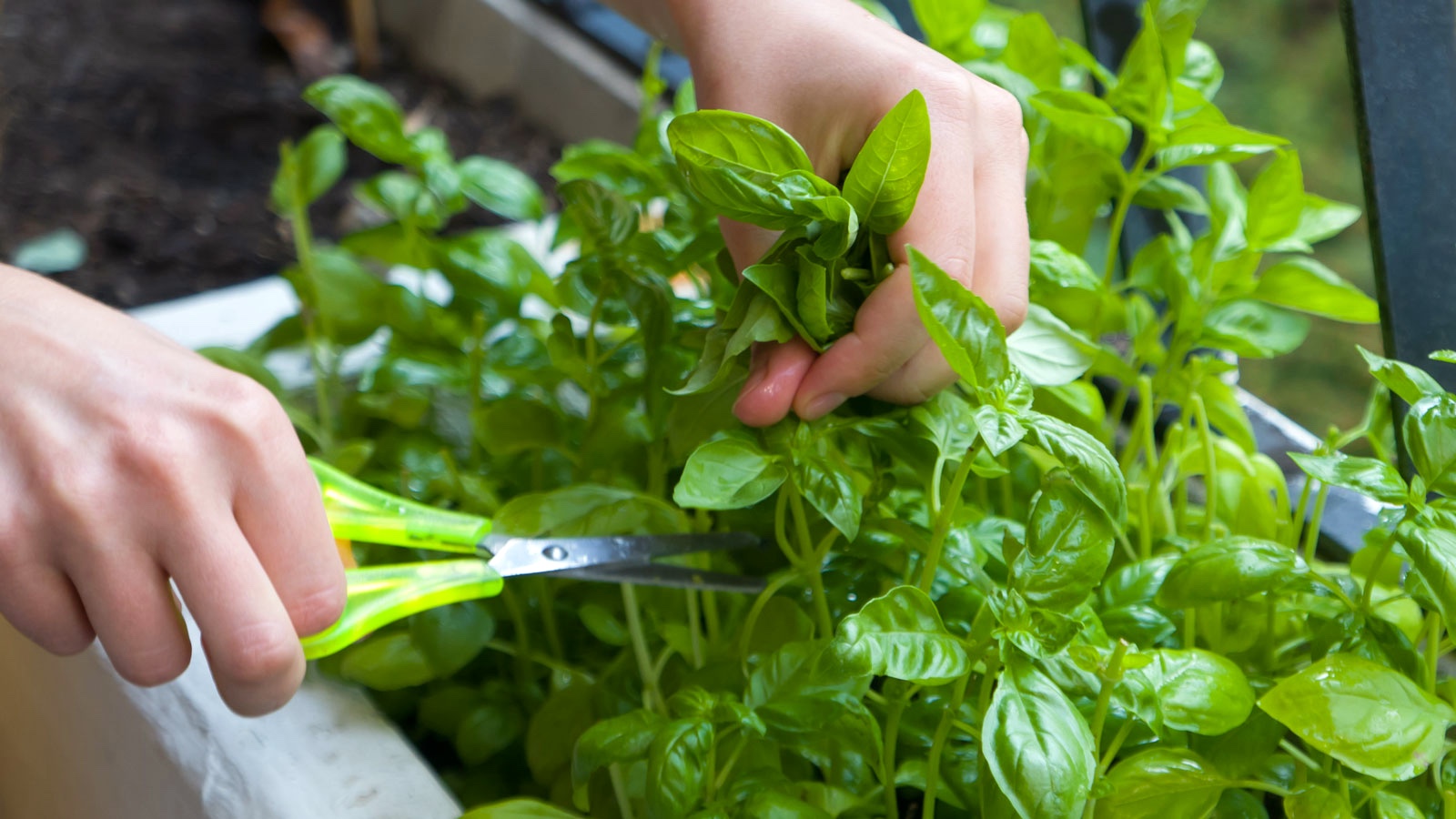

Amy Draiss
Sometimes it’s a good idea to intervene and make a few snips before herbs get straggly or unkempt or, worse, before they bolt and run to seed. Not to mention, most herbs benefit from regular trimming beyond picking and harvesting in order to promote further crops for our enjoyment.
So why give common herbs a haircut in summer? Well pinching or cutting back the stalks encourages more stem and foliage growth. It also creates a healthier, balanced, rounded and bushy shape. Making smart cuts can also help prevent certain outdoor and potted herbs (such as thyme or basil) from getting woody. Trimming the herbs will keep them healthy and looking their best all season. Here are some of the herbs you need to line up for a summer cut to keep them happier for longer.
Trimming Herbie Plants in Summer
Learning how to trim herbs is easy. Pinch the new, tender growth just above a leaf node. If you need to do a lot of trimming, you can use scissors or herb snips wiped with rubbing alcohol to disinfect them. You can find a good range of both professional and affordable herb scissors at Amazon, with prices starting from $9.99.
Oregano and thyme can be pinched back regularly. Perennial herbs should not be cut more than a third of their length at any time. When herbs start to flower, pinch those off, too. By trimming herbs and pinching off the flowers, the plant will redirect its energy into producing leaves. So now you know how to trim your herbs, and why, here are the herbs that grow back better than ever with a haircut in summer.
1. Basil
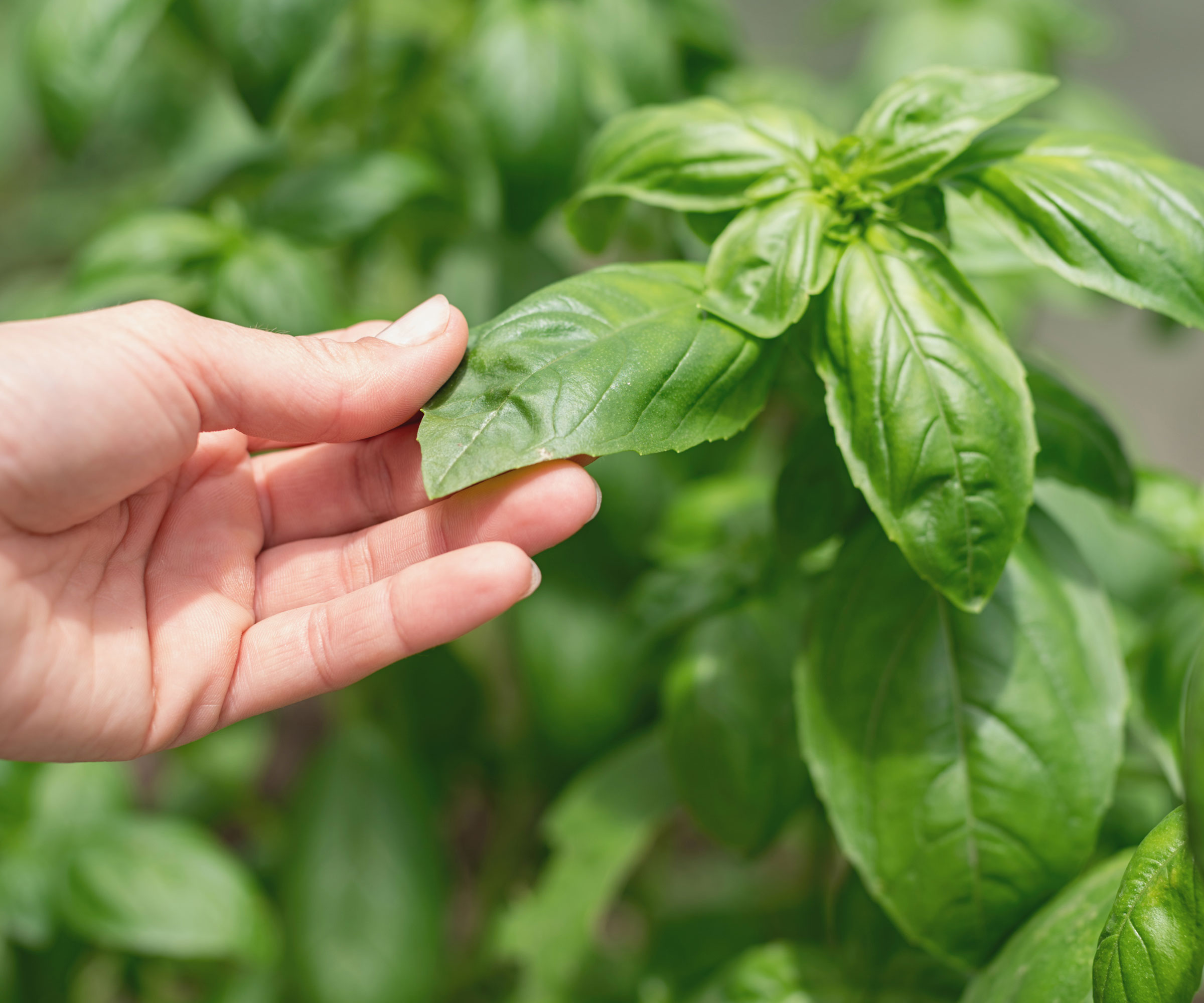
Basil (Ocimum basilicum) benefits by frequent trimming, starting when it is 6-8 inches (15-20cm) tall. You can trim basil all summer to keep it bushy and growing and prevent it from flowering too soon.
When harvesting basil, cut just above a pair of leaves. If you are pinching basil to make the plant bushier, pinch off the tip of the stem. Save your basil pinches to toss into soups, stews, salads, or pasta dishes. You can pinch off the flowers as they form, too, and even use those in the kitchen.
2. Common Thyme
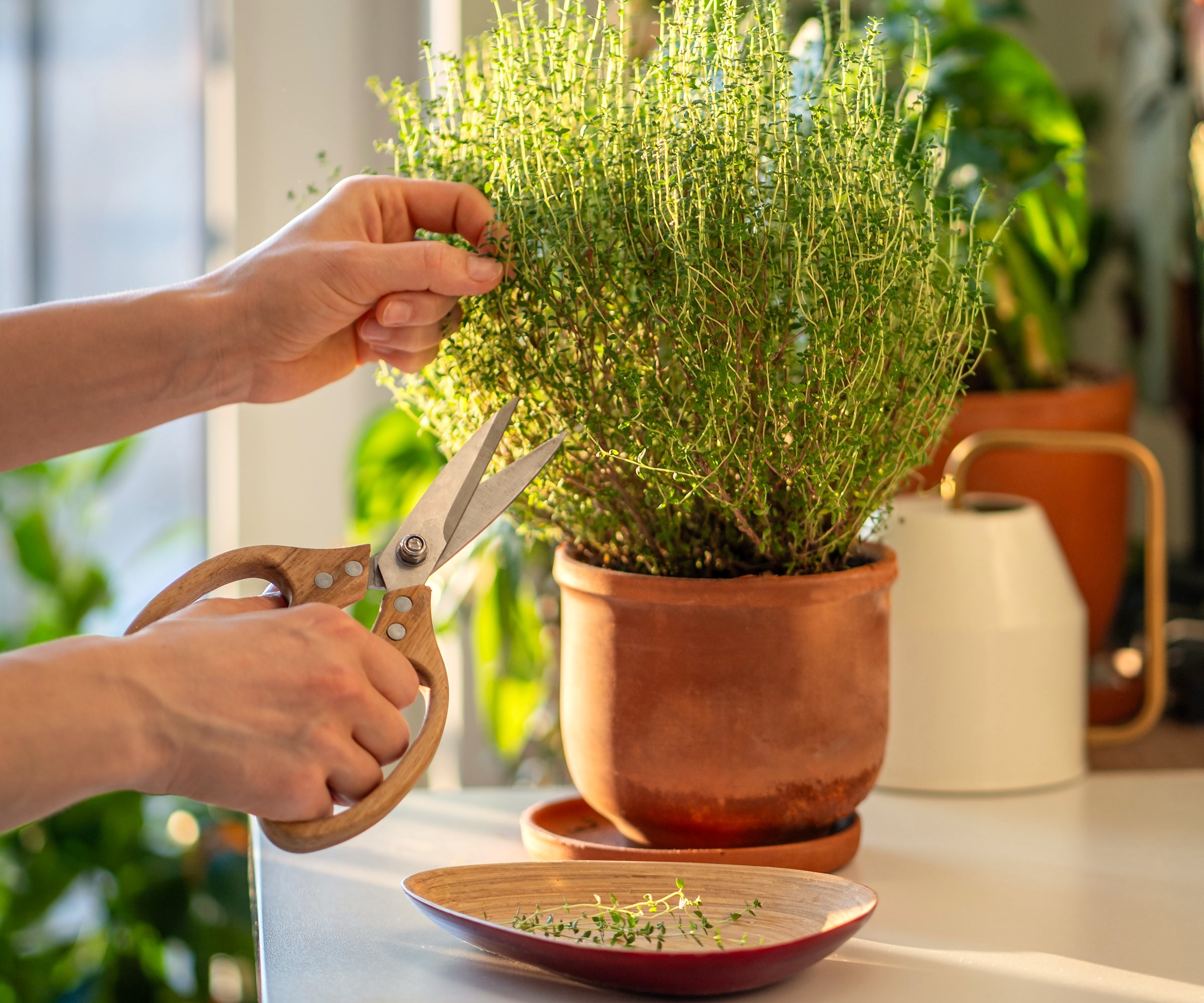
Clip the outer stems of common thyme (Thymus vulgaris) regularly to encourage bushiness. Never remove more than a third of the plant at one time. Harvest thyme plants right before it blooms when the essential oils are at its peak.
The flowers are attractive and great for pollinators, but if you want the best flavored leaves, you need to pinch off those blooms as soon as you see them. You can always allow a few stems to go to seed at the end of the season for propagation.
3. Lemon Balm
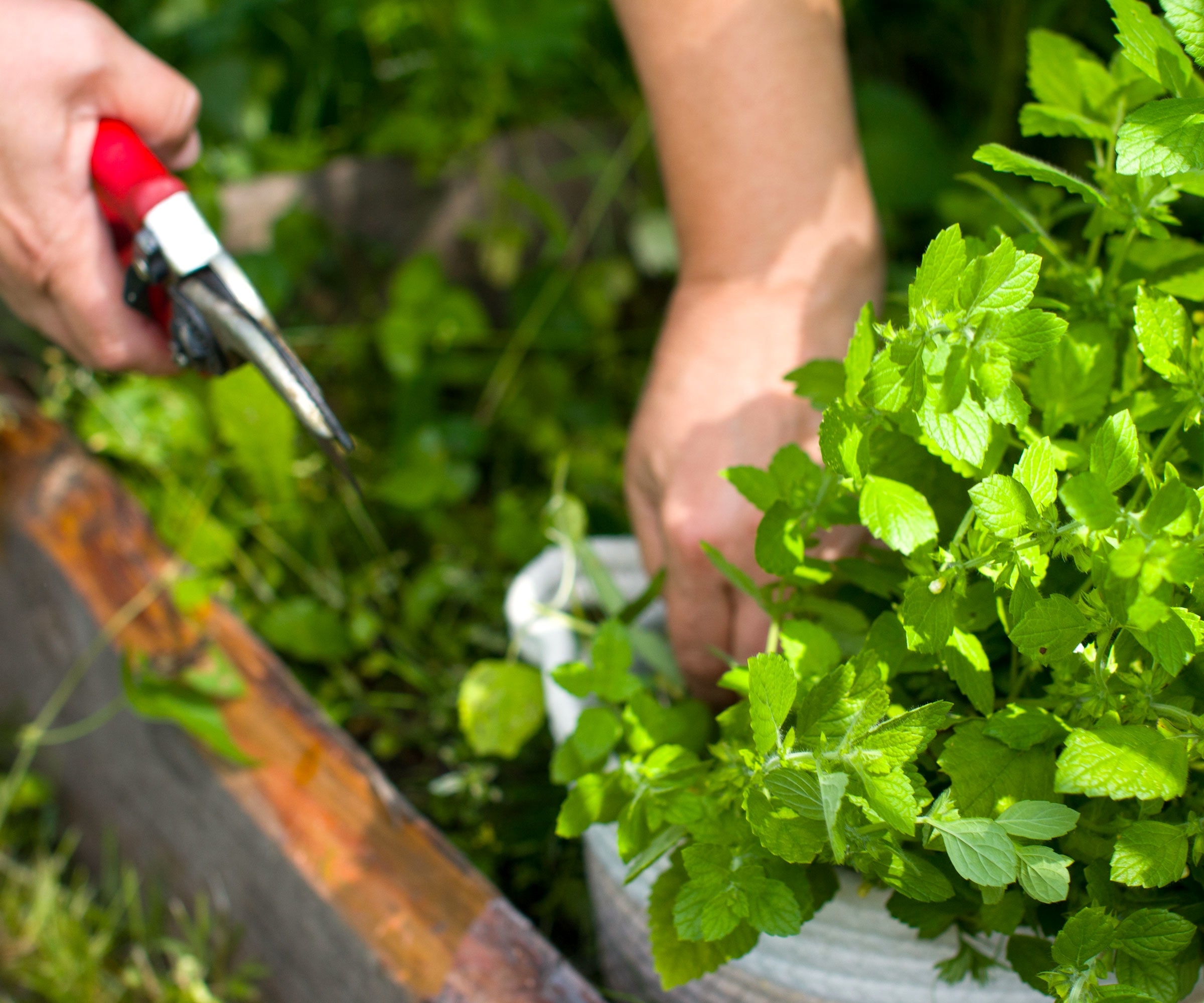
How do you trim herbs like lemon balm (Melissa officinalis) for the best results? It sounds drastic, but the most effective haircut is a big one. Cut around half your lemon balm in midsummer to produce new growth. To improve air circulation, cut out several stems from the center of the plant.
Sign up for the Gardening Know How newsletter today and receive a free copy of our e-book "How to Grow Delicious Tomatoes".
After flowering, if the plant looks leggy, cut it back to the ground and it will reward you with fresh, lemony leaves to use in tea and fall baking. Removing the flower stems will prevent its rampant reseeding.
4. Oregano
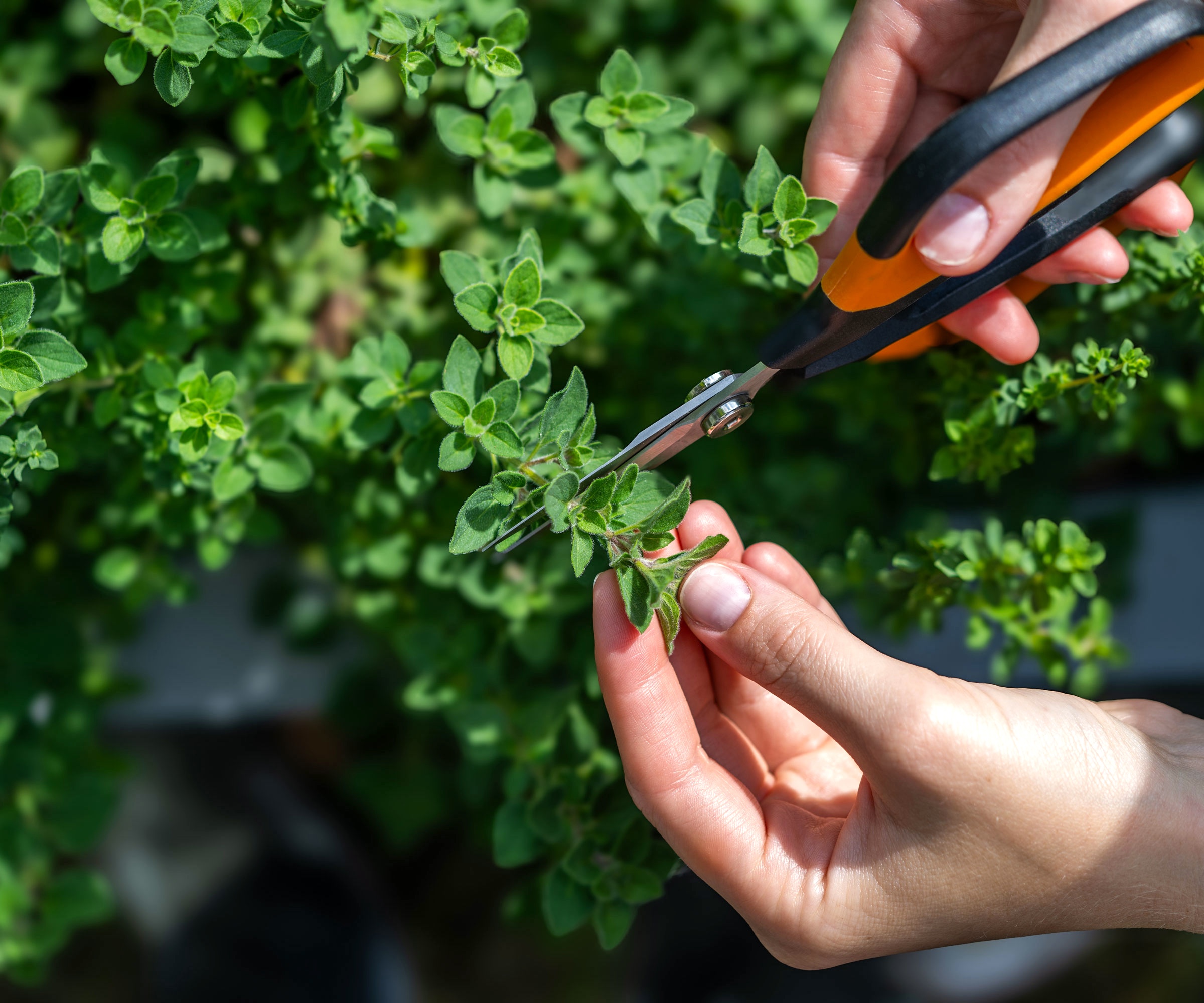
Pinch oregano (Origanum vulgare) stems back to a leaf node regularly to keep leaves young and fresh. Doing this will also help to prevent the plant from getting woody. You should also harvest oregano leaves each week. The plant will also need a haircut after flowering to remove flower heads and shape the plant.
5. Sage
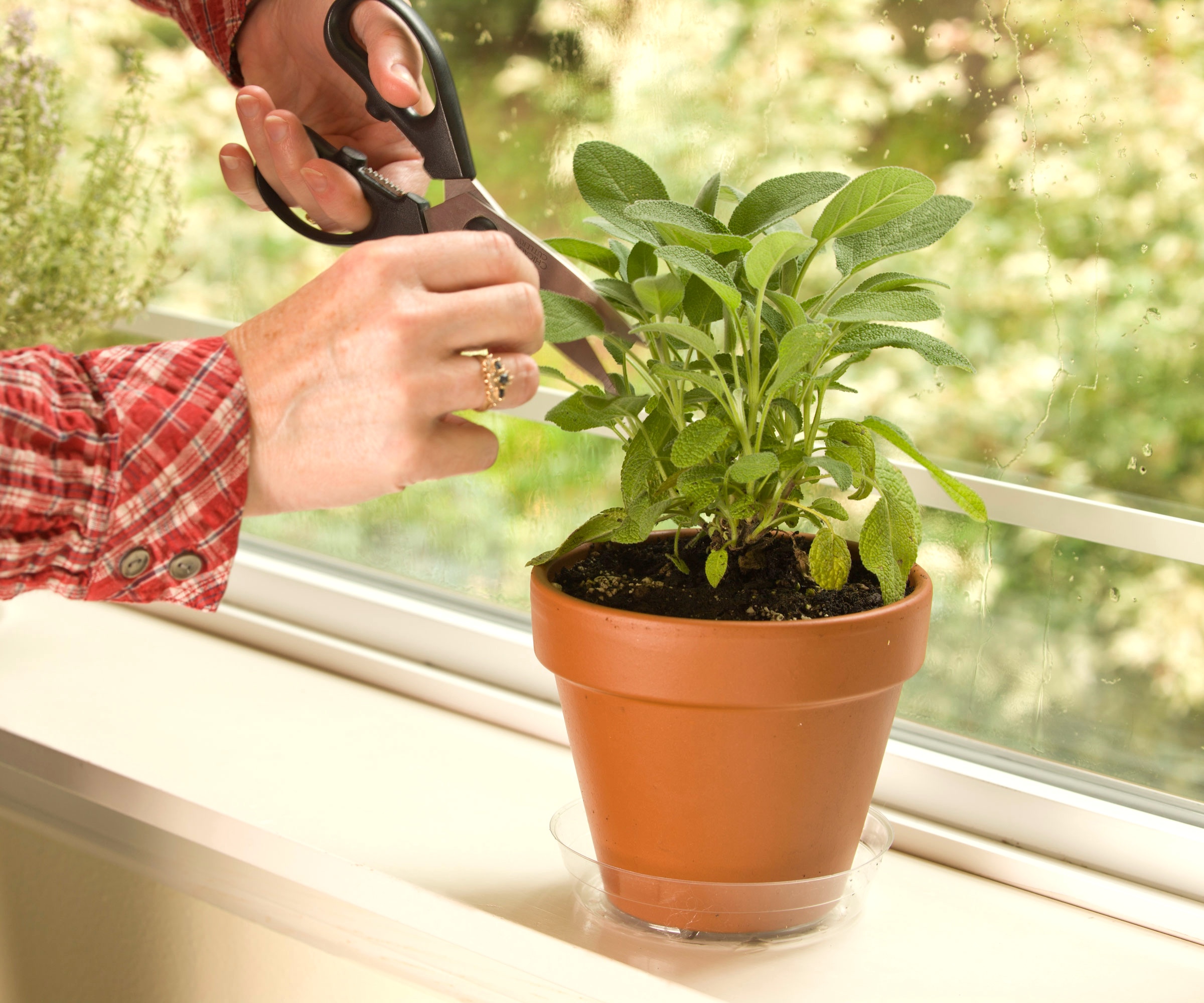
You can trim sage (Salvia officinalis) in early spring as new growth starts. Cut 6-8 inch (15-20cm) stems as needed for culinary purposes. If you are growing sage as an ornamental, you can let the pretty purple flower spikes bloom in midsummer.
However, when sage is being grown for culinary uses, you should pinch off the flowers as they emerge to protect the flavor of the leaves. You should also cut sage back after flowering. This is in addition to picking sage herbs to eat.
As well as knowing how to cut back herbs like sage, it’s important to know exactly when – and when not to attempt those cuts. Avoid late fall pruning, which can damage the plant.
6. Spearmint
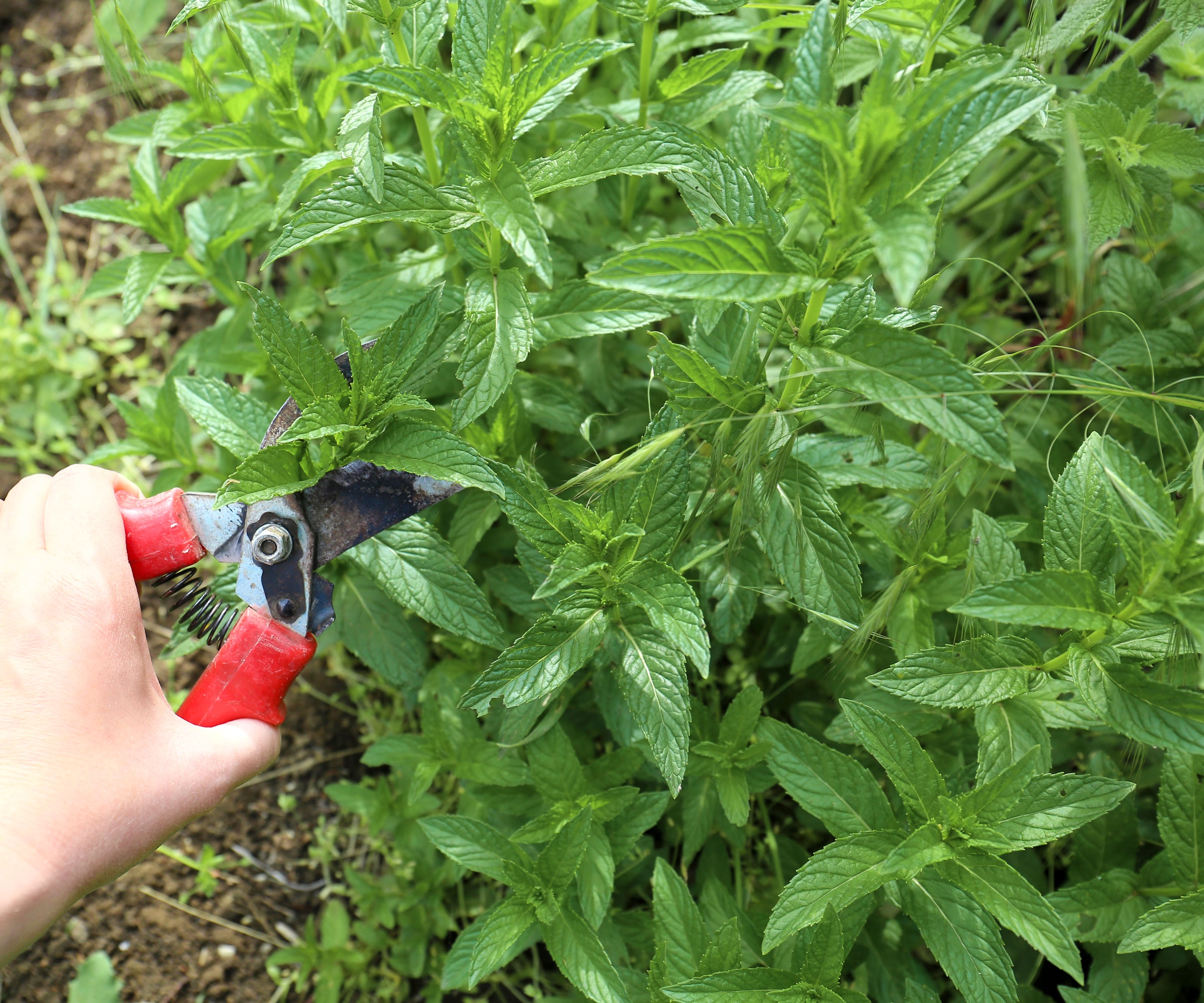
You should be clipping spearmint (Mentha spicata) as needed all summer. After flowering or at the end of summer, however, you also need to cut it back to 2 inches (5 cm) from the ground.
The spearmint plant will quickly regrow for use during the fall. Many other types of mint can be trimmed in the same way, including peppermint, spearmint, chocolate mint, apple mint and pineapple mint.
Frequently Asked Questions
Which herbs don’t need a haircut?
Herbs such as chives, garlic chives, and lemon grass don’t need to be trimmed in summer. They are grassy herbs and typically the whole length of the stem is cut when harvested. The flowers of chives and garlic chives are great nectar sources for pollinators and are usually allowed to bloom.
What happens if you don’t give herbs a trim?
Some annual herbs – such as basil – will bolt (that is, they will flower and seed early) if you don’t keep up with trimming. Frequent pinching or harvesting will delay flowering for a while, and giving herbs a dedicated trim will also stave off seeding. Eventually, though, plants will flower and go to seed.
This article features products available from third party vendors on the Gardening Know How Shop. Keep in mind that our plant inventory is limited - so if you’re thinking of purchasing, don’t wait!
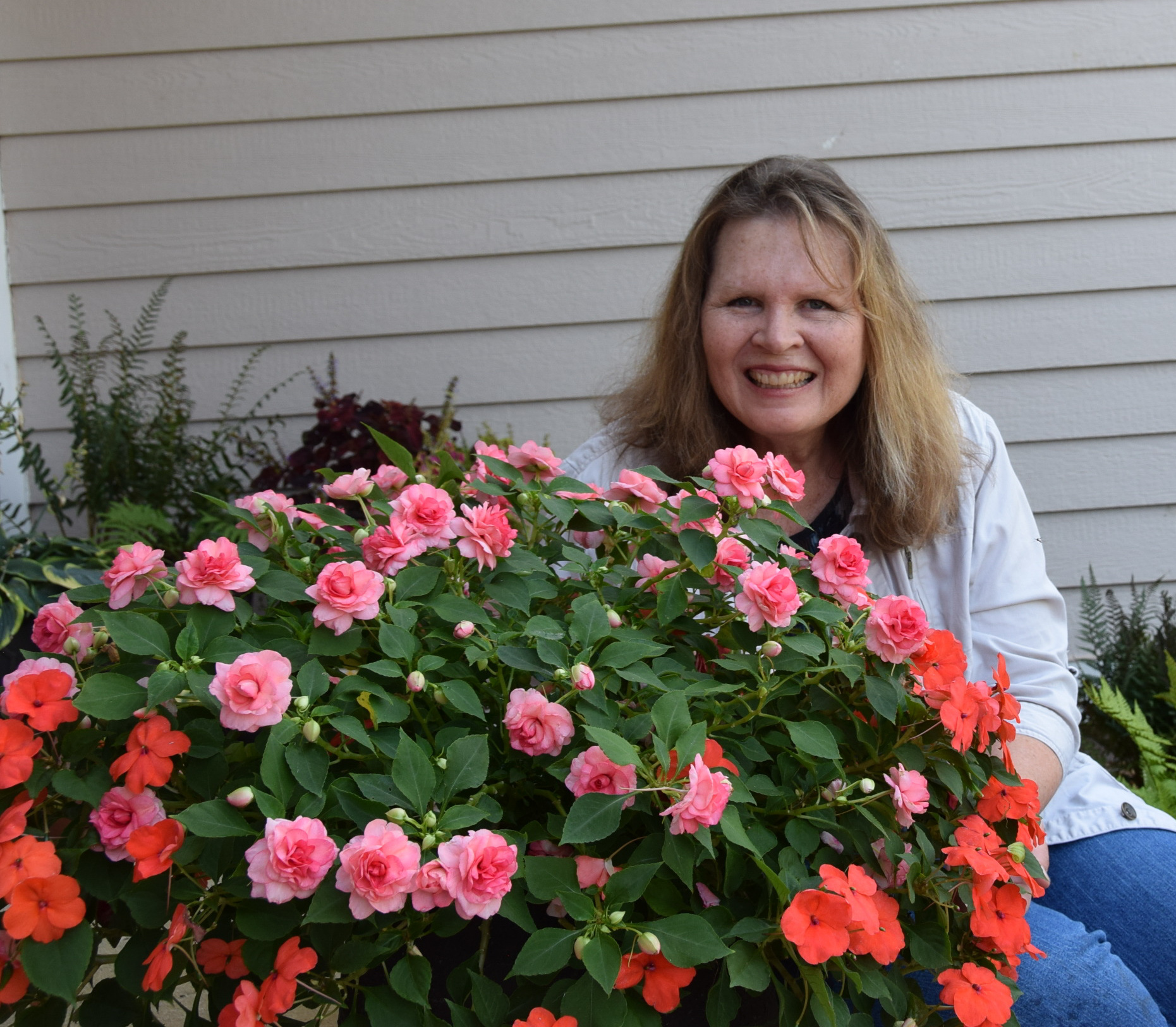
After graduating from Oklahoma State University with a degree in English, Susan pursued a career in communications. In addition, she wrote garden articles for magazines and authored a newspaper gardening column for many years. She contributed South-Central regional gardening columns for four years to Lowes.com. While living in Oklahoma, she served as a master gardener for 17 years.
- Amy DraissDigital Community Manager
